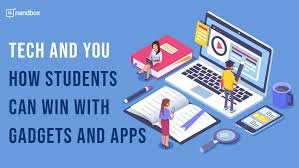Empowering Education: Enhancing Teaching and Learning Through Technology
Technology is changing the way we live, work, and learn. In education, it offers powerful tools that can transform traditional teaching methods and open new possibilities for learners of all ages. When used thoughtfully, technology enhances learning outcomes, boosts student engagement, and empowers educators to be more effective in their roles.
Modern Classrooms and Digital Tools
Today’s classrooms look very different from those of the past. Interactive whiteboards, tablets, and online platforms are now common. Tools like Google Classroom, Microsoft Teams, and Zoom support remote and blended learning models, allowing students and teachers to stay connected anytime, anywhere.
Digital content such as videos, simulations, and eBooks make lessons more interactive and accessible. Students can learn at their own pace, revisit difficult topics, or explore subjects beyond the standard curriculum using online resources.
Personalised Learning Experiences
One of the greatest advantages of educational technology is personalization. With the help of AI and data analytics, learning platforms can tailor content to meet the needs of individual students. Whether a learner is struggling with math or excelling in science, technology can adjust the difficulty, offer feedback, and suggest targeted resources.
This approach helps close learning gaps and encourages students to take ownership of their education. Teachers can also monitor progress in real-time and provide support where it’s most needed.
Boosting Student Engagement
Keeping students engaged is often a challenge, but technology offers creative solutions. Gamified learning platforms like Kahoot! and Quizizz turn quizzes into fun competitions, increasing motivation and participation. Virtual reality (VR) and augmented reality (AR) provide immersive experiences that bring subjects like history and science to life.
These tools make learning more enjoyable, memorable, and meaningful—especially for visual and hands-on learners.
Empowering Educators
Technology also supports teachers by simplifying administrative tasks. Automated grading, attendance tracking, and lesson planning tools save time and reduce workload. Digital assessments offer instant results, making it easier to adjust instruction based on performance.
Professional development has become more accessible through webinars, online courses, and teacher communities. Educators can continuously learn new methods and tools to enhance their teaching practices.
Overcoming Challenges
Despite its benefits, using technology in education comes with challenges. Not all students have access to reliable internet or devices, which can widen the digital divide. Ensuring equity and inclusion is a top priority for schools and policymakers.
Cyber-security and data privacy are also concerns, especially when handling student information. Teachers and institutions must be trained on how to use technology safely and responsibly.
The Path Forward
When used wisely, technology is a powerful ally in education. It enhances teaching, supports personalised learning, and prepares students for the digital world. The key lies in thoughtful integration—aligning tools with educational goals and ensuring they are accessible to all learners.
As technology continues to evolve, so too will the ways we teach and learn. By embracing innovation, educators can create richer, more dynamic learning environments that inspire curiosity and success.







